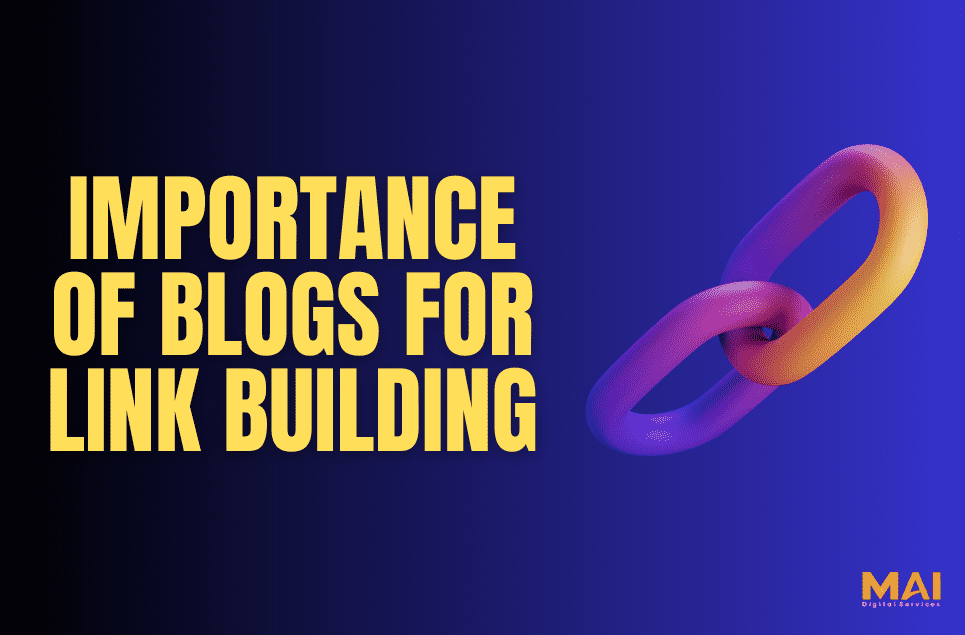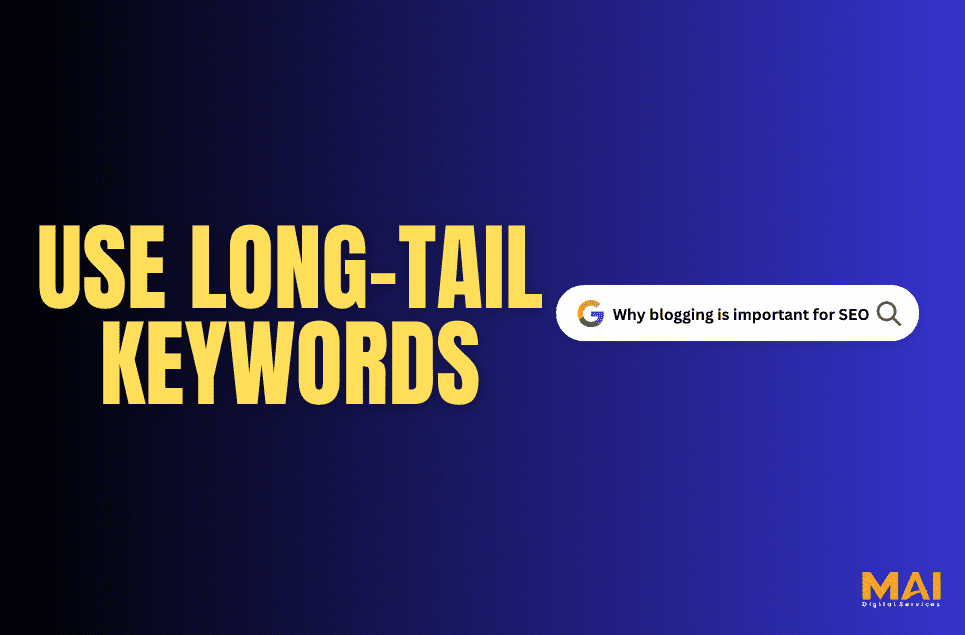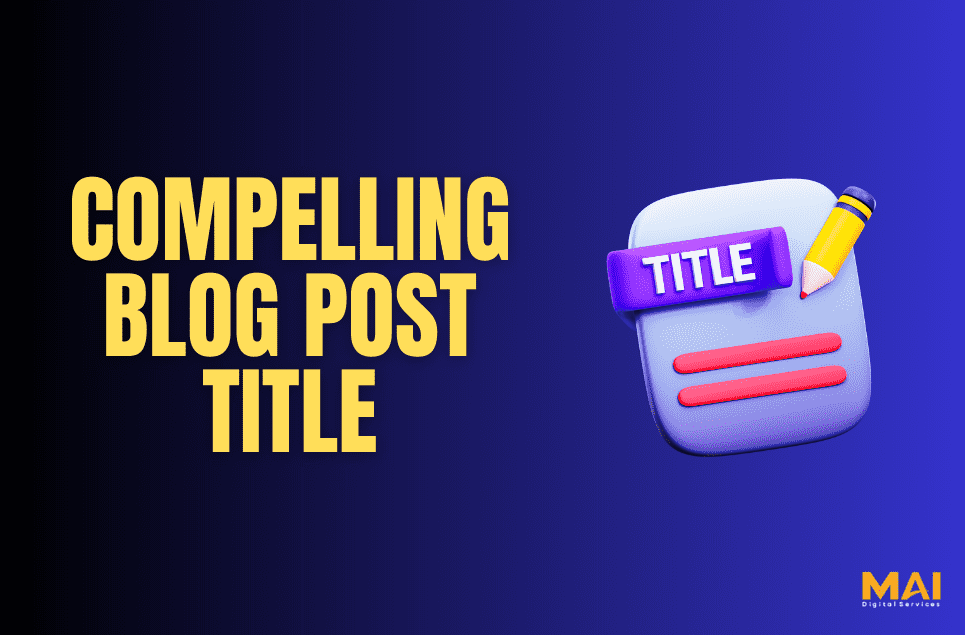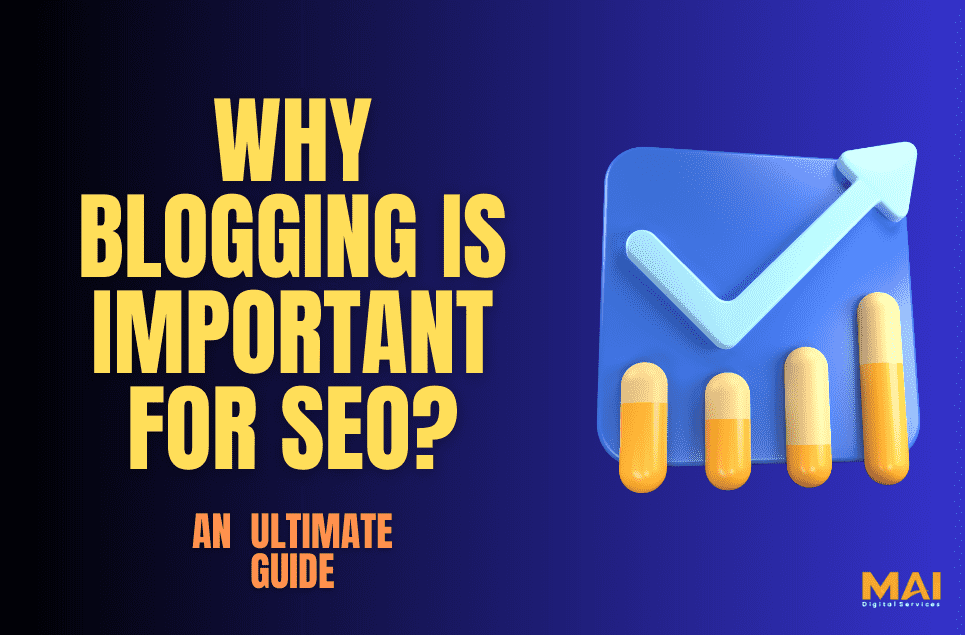Why blogging is important for SEO? This is one of the biggest questions that small businesses often ask us in 2023.
Blogging has become an essential part of any successful SEO strategy. It provides a platform for businesses to create fresh and relevant content that search engines can crawl and index, increasing their chances of ranking higher in search engine results pages (SERPs).
In this post, we’ll explore the importance of blogging for SEO and how it can help businesses establish their authority, expertise, and trustworthiness in their industry. By consistently publishing high-quality blog content, businesses can attract and engage their target audience, driving more traffic to their website and ultimately improving their overall SEO performance.
Let’s dive into why blogging is crucial for your business’s success on Google Search Engine.
Crucial Benefits of Blogging

Blogging helps you target specific keywords and topics
One of the primary benefits of blogging is that it allows you to target specific keywords and topics related to your business or industry.
By incorporating these keywords into your blog posts, you’re signaling to search engines what your website is about and what kind of content you offer. This makes it easier for them to understand your site’s relevance to users’ search queries.
Consistent blogging establishes authority
Another significant benefit of consistent blogging is that it helps establish a brand’s authority in its industry. By providing valuable insights, tips, and information through regular blog posts, businesses can demonstrate their expertise on a particular subject matter.
This not only builds trust with potential customers but also encourages other websites to link back to your content as a reputable source.
Blogging attracts backlinks and social shares
Backlinks are links from other websites that point back to your site. They are one of the most critical factors in determining a website’s authority on the Google Search Engine. Consistent blogging increases the likelihood that other websites will link back to your content as a credible source of information.
Social shares are another way that blogging can improve your website’s visibility on Google Search Engine. When people share your blog posts on social media, it increases the reach of your content and exposes it to a broader audience. This can lead to more traffic, and backlinks, and ultimately improve your website’s SEO performance.
How Important Are Blogs to SEO? Summary of Why Blogs are Important for SEO and Internal Linking

Blogs are a vital component of any SEO strategy, providing fresh and relevant content that search engines love. By regularly publishing blog posts, you can increase your website’s indexable pages, giving search engines more content to crawl and index. This can lead to improved rankings for your target keywords and increased organic traffic to your site.
Targeting Long-Tail Keywords
One of the key benefits of blogging is the ability to target long-tail keywords. These are specific phrases or questions that users might type into a search engine when looking for information on a particular topic. By creating blog posts that answer these questions or provide in-depth information on these topics, you can attract more organic traffic to your website.
For example, if you run an online store selling pet supplies, you might create a blog post titled “How to Choose the Right Dog Food for Your Pet.” This post could target long-tail keywords such as “best dog food for puppies” or “grain-free dog food brands.” By answering these specific questions and providing valuable information, you can attract more targeted traffic to your website.
Internal Linking
Another benefit of blogging is the ability to improve the overall structure of your website through internal linking. Internal linking involves linking from one page on your site to another page on your site. By doing this within your blog posts, you can help search engines understand the structure of your site and navigate it more easily.
For example, if you write a blog post about dog grooming tips, you could link from that post to other related posts on your site such as “10 Must-Have Grooming Tools for Your Dog” or “How Often Should You Bathe Your Dog?” This helps both users and search engines find related content on your site more easily.
External Linking
Blogging also provides opportunities for external linking, which can further boost your website’s authority and credibility. External links are links from other websites pointing back to your site. When other websites link to your content, it signals to search engines that your content is valuable and authoritative.
For example, if you write a blog post about the benefits of raw dog food, other pet-related websites might link to your post as a source of information for their own readers. This can help boost your website’s authority and credibility in the eyes of search engines.
Social Media Promotion
Finally, blogging provides opportunities for social media promotion, which can increase brand awareness and drive more traffic to your website. By sharing your blog posts on social media platforms such as Facebook, Twitter, and LinkedIn, you can reach a wider audience and attract more visitors to your site.
For example, if you write a blog post about the benefits of adopting rescue dogs, you could share that post on Facebook with a caption such as “Thinking about adding a furry friend to your family? Check out our latest blog post on why rescue dogs make great pets!” This can help drive traffic back to your website and improve its overall SEO performance.
Using Longtail Keywords and Long Tail Content

Long-tail keywords and long-tail content are two essential components of content marketing that can help businesses attract more organic search traffic to their websites. In this section, we will discuss what long-tail keywords and long-tail content are, how they can benefit your website’s SEO, and why you should focus on them.
What Are Long Tail Keywords?
Long tail keywords are specific phrases that people use to search for something online. They are longer and more detailed than regular keywords, and they often have less competition.
For example, instead of using the keyword “SEO,” a long tail keyword could be “using longtail keywords for SEO.” Long tail keywords typically have lower search volume but higher conversion rates because they target a specific audience.
Why Should You Focus on Long Tail Keywords?
Focusing on long-tail keywords is beneficial for several reasons. First, it allows you to target a specific audience with your content. By creating content around these specific phrases, you can attract more organic search traffic to your website.
Second, it helps you avoid keyword stuffing, which is a bad practice that can hurt your search engine rankings. By focusing on long-tail keywords and creating quality content around them, you can avoid this problem and still rank well in organic search results.
What Is Long Tail Content?
Long-tail content is content that focuses on these long-tail keywords. By creating high-quality, relevant content around a specific topic or phrase, other websites are more likely to link back to it. Quality backlinks are important for SEO because they signal to search engines that your website is authoritative and trustworthy.
Why Is Long Tail Content Important for SEO?
Fresh content is important for SEO because it signals to search engines like Google Search Console that your website is active and relevant. By creating evergreen content around specific long-tail keywords or phrases related to your products or services, you can attract visitors to your site for years to come.
In addition to attracting visitors through organic search traffic, long-tail content can also help you earn backlinks. When you create high-quality, relevant content around a specific topic, other websites are more likely to link back to it. This is because they see your content as authoritative and informative.
How Can You Create Long Tail Content?
Creating long-tail content requires a strategic approach. Start by conducting keyword research to identify relevant long-tail keywords that your target audience is searching for. Once you have identified these keywords, create high-quality, informative content around them.
When creating long-tail content, it’s important to keep in mind the user’s intent behind their search query. What are they looking for? What questions do they have? By answering these questions in your content, you can provide value to your readers and establish yourself as an authority on the topic.
Conduct Keyword Research: Choose Blog Topics with Keyword Research

If you’re looking to start a blog, or even if you’ve been blogging for a while, conducting keyword research is an essential step in optimizing your content for search engines.
By identifying the most relevant and popular keywords related to your brand and industry, you can choose blog topics that are more likely to rank higher in Google search results.
Keyword research can also help you understand what searchers are looking for and what questions they have, allowing you to focus your content strategy accordingly. Starting with keyword research is a good idea for any blog, as it provides data-driven insights into what topics and keywords are most likely to resonate with your target audience.
One of the main benefits of incorporating keywords naturally into your blog posts is improving your brand’s authority and relevance in the eyes of Google and other search engines.
By targeting specific keywords, you can attract more traffic to your blog, increase brand awareness, and generate more brand mentions and backlinks over time.
But how do you conduct keyword research? And how do you choose the right blog topics based on this research? Let’s dive deeper into these questions.
Conducting Keyword Research
The first step in conducting keyword research is brainstorming a list of potential keywords related to your brand or industry. Think about what products or services you offer, what problems they solve, and what questions people might have related to those products or services.
Once you have a list of potential keywords, use a tool like Google Keyword Planner or Ahrefs Keywords Explorer to see how many people are searching for those terms each month. These tools will also provide suggestions for related keywords that might be worth targeting as well.
When analyzing these results, pay attention not only to how many people are searching for each term but also to how difficult it would be to rank them. Some high-volume keywords may be extremely competitive- making it difficult (if not impossible) to rank for them without a significant amount of time and effort.
Choosing Blog Topics Based on Keyword Research
Once you have a list of potential keywords to target, it’s time to choose blog topics that incorporate those keywords naturally. Remember, your goal is not to stuff as many keywords into your blog posts as possible but rather to provide valuable content that resonates with your target audience.
One way to do this is by answering common questions related to your industry or products/services. For example, if you run a fitness blog, you might create a post titled “How Many Calories Should You Eat in a Day?” This topic incorporates the keyword “calories” while also providing valuable information for readers.
Another approach is to create content around trending topics or news stories related to your industry. For example, if you run a marketing blog, you might write about the latest Google algorithm update and how it could impact SEO strategies moving forward.
This type of content can help establish your brand as an authority in your industry while also incorporating relevant keywords.
Write a Compelling Blog Post Title: Don’t Ask Questions in Your Titles but Provide Answers, Write a Catchy Title

Catchy titles are an essential part of any blog post. They serve as the first impression to your readers and can make or break whether they decide to read your content. However, many bloggers make the mistake of using questions in their post titles, which can lead to confusion and may not accurately describe the content of their posts.
Avoid Using Questions in Your Post Titles
Using questions in your post titles is a common mistake that many bloggers make. While it may seem like a good idea to ask a question that leads into your content, it can actually be detrimental to your reader’s experience. Questions can often lead to confusion and may not accurately describe the content of your post.
For example, if you were writing a blog post about how to bake a cake, you might be tempted to use a title like “How Do You Bake A Cake?” While this title does ask a question that leads into your content, it doesn’t provide any real value for your readers.
Instead, you could use a title like “10 Easy Steps To Bake A Delicious Cake” which provides answers and gives readers a clear idea of what they can expect from your post.
Provide Answers in Your Titles
Instead of using questions in your titles, provide answers that give readers a clear idea of what they can expect from your post. This will improve the reader experience and build trust with your audience, leading to increased engagement with your blog posts.
For example, if you were writing a blog post about how to write catchy titles for blog posts, you might use a title like “Write A Compelling Blog Post Title: Don’t Ask Questions In Your Titles But Provide Answers”. This title provides answers and gives readers an accurate description of what they can expect from the post.
Writing Catchy Titles Improves Reader’s Experience
Writing catchy titles is important because it improves the reader’s experience. When readers see an interesting or intriguing title, they are more likely to click on it and read the post. This leads to increased engagement with your blog posts and can help build a loyal audience.
For example, if you were writing a blog post about the benefits of meditation, you might use a title like “5 Surprising Benefits Of Meditation That Will Change Your Life”. This title is catchy and provides answers that give readers a clear idea of what they can expect from the post.
Pro Tip: Use Headers to Break Up Your Content
Using headers is an effective way to break up your content and make it easier for readers to digest. Headers also help improve the reader experience by providing structure and organization to your post.
For example, if you were writing a blog post about how to start a successful business, you might use headers like “Developing A Business Plan”, “Finding Funding”, and “Marketing Your Business”. These headers provide structure and organization to your post, making it easier for readers to follow along.
Add SEO-Optimized Images and Videos: SEO Optimize Your Blog Posts Before Publishing

Including images and videos in your blog posts can make them more engaging, which is a positive signal for SEO. Visitors are more likely to stay on your site for longer periods of time if they are entertained by the content.
This increased engagement can lead to better search engine rankings, as Google takes into account user behavior when determining the relevance and quality of a website.
However, simply including images and videos in your blog posts is not enough. You need to optimize them for SEO purposes as well. Here are some tips for doing just that:
Optimize Your Images
Images can be optimized for SEO by compressing them for faster loading times and adding descriptive alt text that includes relevant keywords.
Compressing images reduces their file size without sacrificing quality, which makes them load faster on your website. Faster loading times improve user experience, which is another positive signal for SEO.
Alt text provides a description of an image’s content to search engines since they cannot “see” images as humans do. Including relevant keywords in the alt text helps search engines understand what the image is about and how it relates to the rest of the content on your page.
When optimizing images, make sure you use high-quality visuals that are relevant to your blog post’s topic. Avoid using generic stock photos or irrelevant graphics as they may harm rather than help your SEO efforts.
Optimize Your Videos
Videos can also be optimized by including a transcript or closed captions, which can improve accessibility and help search engines understand the content of the video. Transcripts provide written versions of spoken words in videos while closed captions display text on screen synchronized with audio.
Transcripts and closed captions make it easier for people with hearing impairments or those who prefer reading over watching videos to consume your content. They also provide additional textual content that search engines can crawl and index, which improves visibility in search results pages (SERPs).
When publishing a new blog post containing videos, make sure you include a meta description that summarizes the content and includes relevant keywords to help search engines understand what the post is about. A meta description is a brief summary of your content that appears below the title in SERPs.
Avoid Using Too Many Ads
While ads can generate revenue for your website, using too many of them can negatively impact user experience and potentially harm your SEO rankings. Visitors may feel overwhelmed or annoyed by excessive ads, which can lead to high bounce rates and low engagement metrics.
Moreover, Google considers user experience as one of its ranking factors. If your website provides a poor user experience due to excessive ads, it may be penalized in search results.
Consider Using SEO Services or Tools
Optimizing blog content for SEO purposes can be time-consuming and complex. Fortunately, there are several SEO services or tools available that can help you streamline the process and improve your overall strategy.
Some popular options include Yoast SEO, SEMrush, Ahrefs, Moz Pro, and Google Analytics. These tools provide insights into keyword research, on-page optimization, link-building opportunities, competitor analysis, and more.
Organize by Topic Cluster: Golden Rule of One Page per Topic, Limit Topic Tags

Organizing your blog content by topic cluster is the golden rule of SEO. It helps search engines understand and prioritizes your content. By focusing on one topic per page, you can highlight the unique features and benefits of each topic- making it more appealing to readers and search engines alike.
Limit Each Page to One Topic
Limiting each page to one topic is crucial for effective SEO. When you try to cover too many topics in a single page or post, it becomes difficult for search engines to understand what your content is about. This confusion can lead to lower rankings in search results.
Don’t Use Too Many Similar Tags
Using too many similar tags can also confuse search engines and dilute the relevance of your content. Instead of using multiple tags that are similar, focus on using specific tags that directly relate to the content on that particular page.
Plan & Outline Your Topics
Planning and outlining your topics in advance can help you create a cohesive and effective content strategy. By creating a list of topics related to your niche or industry, you can ensure that each piece of content you create fits into a larger theme or category.
Consider Features & Benefits
When planning your topics, consider the features and benefits that make them unique. What sets them apart from other topics in your niche? Highlighting these features will not only make your content more interesting but also help it stand out in search results.
Taking the time to plan out your topics may seem like extra work at first, but it will save you time in the long run. By having a clear understanding of what topics you want to cover, you’ll be able to create more focused and effective content.
More Benefits of Organized Topic Cluster
In addition to improving SEO, organizing by topic cluster has other benefits as well. It makes it easier for readers to find relevant information on your site since they know exactly where to look for specific information.
By limiting each page or post to one topic, you also give yourself more opportunities for internal linking. Internal linking is an important SEO strategy that involves linking to other pages or posts on your site.
By linking to related content, you can help search engines understand the structure of your site and prioritize the most important pages.
When creating content for your blog, it’s important to keep in mind that quality is more important than quantity. While it may be tempting to create as much content as possible, focusing on creating high-quality content that provides value to readers will ultimately lead to better results.
Update Existing Content: Index Date

One of the most important factors in SEO is having fresh and relevant content on your website. However, constantly creating new content can be time-consuming and expensive.
Luckily, there’s a way to improve your website’s performance without starting from scratch – by updating existing content with new information and insights.
Updating Content Helps Improving Content Relevance
Updating old posts with new content not only saves you time and resources but also helps improve their relevance and value to readers. By adding new information, you can provide more value to your audience while keeping them engaged with your brand.
Send Positive Signals to Search Engines
In addition to improving user experience, regularly updating your content can also signal to search engines that your website is active and constantly providing fresh and useful information to users. This can help boost your SEO performance by increasing the chances of appearing higher in search results.
Index Date
The index date of a page or post is an important factor that search engines consider when ranking results. The index date refers to the last time Google crawled or indexed a page or post on your website.
If you regularly update your content, it signals to search engines that your site is active and provides valuable information for users.
For example, let’s say you have a blog post about “10 Best Restaurants in New York City” that was published two years ago. While the restaurants on the list may still be great options, some may have closed down or changed their menus since then.
By updating the post with new information about these restaurants or adding new ones to the list, you’re providing more value to readers while keeping the current post.
Repurpose Existing Content
Another benefit of updating old posts is that it allows you to repurpose existing content into different formats such as infographics, videos, or podcasts. This gives you an opportunity to reach out to different audiences who prefer different types of media consumption.
Boost Social Shares
Moreover, updating old posts also helps increase social shares and backlinks which are crucial for SEO success. When people share updated posts on social media platforms like Facebook, Twitter, or LinkedIn, it signals to search engines that the content is fresh and valuable.
Similarly, when other websites link back to your updated posts, it increases your website’s authority and credibility.
3.5X More Traffic
In a study conducted by Hubspot, they found that companies that published more than 16 blog posts per month received 3.5 times more traffic than those that published less than four posts per month.
However, creating new content every day is not always possible for small businesses with limited resources. Updating existing content can be an effective way of keeping your website active while improving SEO performance.
Don’t Target the Same Keywords as Other Pages on Your Website: Target More Keywords
Targeting the same keywords as other pages on your website can lead to keyword cannibalization, which means that your web pages will compete with each other for the same keywords. This can result in a lower ranking on the search engine results page and less visibility to your target audience.
To avoid this, it’s important to target more specific keywords. By doing so, you can create content that is unique and relevant to your target market. This will give you more opportunities to rank higher on the search engine results page and attract more people to your website.
Improve User Experience
Creating separate web pages for different topics and targeting specific keywords on each page can also improve your page speed and user experience. When you have multiple pages competing for the same keyword, it can slow down your website’s loading time and make it harder for users to navigate through your site.
By creating separate pages for different topics, you can improve your page speed by reducing the amount of content that needs to load at once. This will make it easier for users to find more information about your company and take time to explore your site.
In addition, by targeting specific keywords on each page of your website, you’ll be able to provide a better user experience for visitors who are looking for information about a particular topic.
For example, if someone is searching for information about dog grooming tips, they’ll appreciate being directed straight to a page that provides them with the information they need.
Opportunity to Reach New Customers
Targeting more keywords can also help you reach new customers and boost your audience. By providing valuable content that addresses different topics related to your industry, you can establish yourself as an authority in your field and attract a wider range of potential customers.
For example, if you run a pet store, instead of targeting generic keywords like “pet supplies,” consider targeting more specific keywords like “dog toys” or “cat food.” By doing so, you’ll be able to provide targeted content that is relevant to people searching for those specific products.
Stand Out from Your Competitors
Targeting more specific keywords can also help you stand out from your competitors. When you target the same keywords as other pages on your website, you’re essentially competing with yourself.
By targeting more specific keywords, you’ll be able to differentiate yourself from other businesses in your industry and attract a more targeted audience.
Drive Traffic to a Website: Blogs Gain More Traffic with SEO Images

Including relevant images in blog posts can help improve the overall SEO of a blog site, making it easier for search engines to understand the content and rank it higher in search results.
In fact, research shows that blog posts with images receive 94% more views than those without. This is because images can help break up long blocks of text, making the content more visually appealing and easier to read.
Attract More Organic Traffic
Images can also help attract more organic traffic to a website by appearing in image search results and driving visitors to the blog post or website. By optimizing images with descriptive file names, alt tags, and captions, bloggers can further improve their chances of showing up in search results and attracting more search traffic.
Descriptive File Names
One way to optimize images for SEO is by using descriptive file names. Instead of using generic names like “image1.jpg” or “photo2.png,” bloggers should use specific keywords related to the content of their blog posts.
For example, if writing about healthy recipes, an appropriate file name could be “healthy-recipe-salad.jpg.” This helps search engines understand what the image is about and improves its chances of ranking higher in relevant searches.
Alt Tags
Alt tags are another important aspect of image optimization for SEO. Alt tags provide alternative text descriptions for images that are displayed when an image cannot be loaded or read by a screen reader. Including relevant keywords in alt tags can help improve the overall SEO of a blog post by providing additional context for search engines.
Captions
Captions are also useful for optimizing images for SEO as they provide additional context and information about an image. Including relevant keywords in captions can help boost the visibility of a blog post in search results.
Share Blog Images
Sharing blog posts with images on social media platforms can also increase visibility and drive more visitors to the website, further boosting its overall traffic and SEO performance. Social media platforms like Facebook, Twitter, Instagram, and Pinterest are great places to share visual content like photos and videos that complement your written content.
Don’t Forget to Incorporate #Hashtags
When sharing blog posts on social media, bloggers should include relevant hashtags to increase their reach and visibility. Hashtags help categorize content and make it easier for users to find related content. This can help attract more visitors to the website and improve its overall SEO performance.
Improve User Experience
In addition to optimizing images for search engines and sharing them on social media, bloggers can also use images to create a better user experience for their readers. Including images that support the written content can help break up long blocks of text, making it easier for readers to digest information.
Simplify Complex Ideas
Images can also be used to illustrate complex ideas or concepts that are difficult to explain with words alone. For example, infographics are a popular way of presenting data in a visually appealing way that is easy for readers to understand.
Custom Brandings
Another way bloggers can use images is by creating custom graphics or illustrations that complement their brand identity. Custom graphics and illustrations not only add visual interest but also help establish a consistent brand image across all marketing channels.
Now, You Know Why Blogging is Important for SEO, Right?
So does blogging help with SEO? Absolutely! By following these tips and best practices for creating high-quality blog content optimized for search engines, you can improve your website’s visibility and attract more targeted traffic to your site.
Key Takeaways
- One of the most important benefits of blogging for SEO is that it allows you to target longtail keywords. These are highly specific phrases that users are searching for, and by incorporating them into your blog posts, you can attract more targeted traffic to your website.
- To choose the right topics for your blog posts, it’s essential to conduct keyword research. This involves identifying the keywords and phrases that are most relevant to your business or industry and using them as a basis for creating content.
- When writing blog post titles, it’s important to avoid asking questions and instead provide answers. A catchy title can help grab readers’ attention and encourage them to click through to read more.
- Adding SEO-optimized images and videos to your blog posts can also help improve their visibility on search engines. By optimizing these elements with appropriate alt text tags and descriptions, you can increase their relevance to search queries.
- Organizing your blog posts into topic clusters is another effective way to improve their SEO value. By grouping related content together on a single page, you can create a comprehensive resource that covers all aspects of a particular topic.
- Updating existing content on your website is also important for maintaining its relevance over time. By adding new information or updating outdated statistics, you can ensure that your content remains fresh and up-to-date.
- Finally, it’s important not to target the same keywords as other pages on your website. Instead, focus on targeting additional keywords that are relevant to your business or industry.


